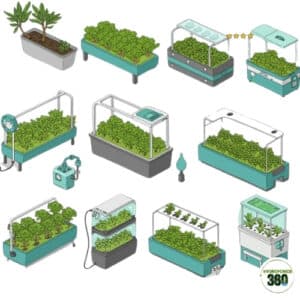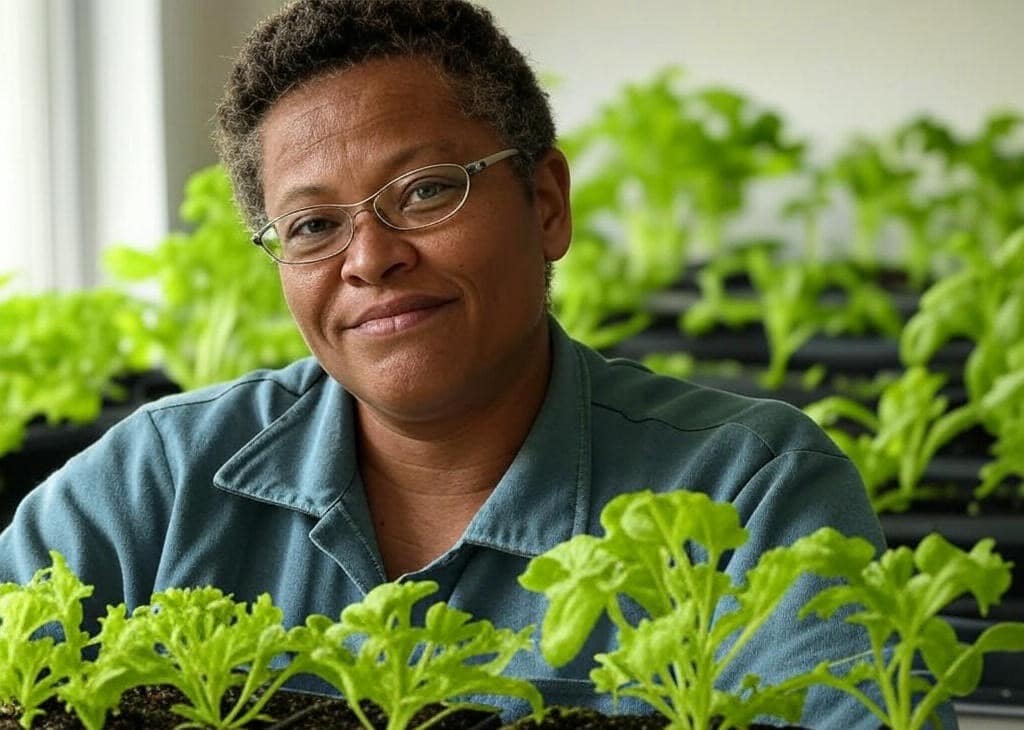A Comparison The Best Hydroponic System Guide
Table Of Content
I recall my initial hydroponics escapade vividly—I won’t say I didn’t know better, but I didn’t know to expect just how fast lettuce roots would grow and was soon struggling to cope with a root ball threatening to block my air pump. In spite of that minor debacle, I was amazed at just how satisfying it was to see plants grow without soil. Hydroponics is a hobby I adore that easily fits my hectic schedule and small apartment.
Hydroponics turns indoor gardening on its side by providing nutrients to the root system straight up, without soil. The process is a wonderful option: it maximizes space, allows year-round cropping, and keeps many soil-based complications at bay. But if you’re new to it, finding the best hydroponic system can be intimidating—trust me, I’ve done a great deal of research in my quest for crisp green salads!
So, to help you out, I’ve compared a number of the most widely used hydroponic systems based on how easy they are to install, how high maintenance they require, their price point, their use of space, and their scalability.
I hope it saves you a little time and prevents you from making my mistakes (such as using a decidedly too shallow jar for basil).

What Actually Makes a Hydroponic System “The Best”?
The best hydroponic system is always the one that matches your goals. Some growers want to keep things simple and low maintenance. Others enjoy complex, high-yield setups with lots of automation. But in every case, a few key factors decide whether a system will work well for you.
Space is usually the first thing to consider. A small kitchen countertop setup demands something very different from a full-room greenhouse build. Your budget is the next concern because some systems are surprisingly affordable to DIY, while others require a more serious investment.
The kinds of plants you want to grow are critical too. Leafy greens, herbs, and strawberries thrive in almost any hydroponic setup. But fruiting plants like tomatoes or cucumbers often require more advanced systems with better support and nutrient management.
Criteria for Comparison
- Ease of Installation: Is it a doddle to install for a novice?
- Maintenance Requirements: Do you need to constantly be messing around with pH and nutrient levels every day?
- Cost: The initial price point and day-to-day expenses.
- Space Efficiency: Great for small apartments or large indoor gardens?
- Scalability: Are you able to scale up when you become more skilled?
System Comparisons
In this section, you’ll find the best indoor hydroponic systems with their pros and cons.
1. Deep Water Culture (DWC)
Pros:
- So straightforward that even my clumsy self was able to set it up (a container, nutrient solution, and air pump).
- Low-cost and a great option for newbies.
- Loves leafy greens such as lettuce and basil.
Cons:
- Roots are always submerged, so you’ve got to watch oxygen levels and water temp.
- Not great for large, fruiting varieties such as tomatoes.
Best for: Beginners, small systems, and leafy greens.
2. Nutrient Film Technique (NFT)
Pros:
- Constant nutrient flow means that the plants get a premium feeding.
- Uses less fertilizer and water compared to some systems, making it a budget-friendly option in the long term.
Cons:
- The risk of a power outage can dry up roots in a flash if the pump fails to kick in. (Ask me about that time I forgot to plug my pump in…)
- Larger plants won’t get enough support.
Best for: Experienced hobby growers, small commercial growers, herbs, and greens.
3. Ebb and Flow (Flood and Drain)
Pros:
- The regular flooding-and-drain cycles provide great aeration.
- Great for a wide range of plants, even fruiting crops.
Cons:
- Slightly more finicky, thanks to timers, flood tables, and drainage gear.
- Maintenance is king—pump failures can be a disaster.
Best for: Experienced growers wanting to branch out in their offerings.
4. Drip System
Pros:
- Drips nutrients precisely to the root zone, no fuss.
- May support small herbs or large fruiting varieties such as peppers or tomatoes.
Cons:
- Drip emitters can get plugged up if you’re not careful.
- Higher up-front price tag since you need multiple drip lines and a large reservoir.
Best for: Individuals wanting to grow a wide range of crops and enjoy experimenting with nutrient control.
5. Aeroponics
Pros:
- Roots get sprayed with nutrient solution, so there’s great aeration and they can grow ridiculously quickly.
- Consumes less water than most systems (nice to the planet and to your wallet).
Cons:
- Not a start system in any manner—it must be controlled precisely and monitored constantly.
- The slightest failure of the pump can dry up the roots in minutes.
Best for: Experienced hobbyists and technical nerds willing to pay for high-growth potential.
6. Wick System
Pros:
- Pretty easy system around here—no electricity or finicky parts.
- Low maintenance and low price tag.
Cons:
- Much slower nutrient delivery, so it’s not the most productive for high growth.
- Good for smaller plants that need fewer nutrients.
Good for: Beginners or anyone looking for a low-tech, easy-going system.
7. Kratky Method
Pros:
-
The ultimate set-it-and-forget-it hydroponics system—no electricity, pumps, or timers needed.
-
Perfect for beginners or busy folks who want fresh greens without the upkeep.
-
Ideal for leafy greens like lettuce and spinach that don’t mind staying in still water for a while.
Cons:
-
Once the water level drops too low, you’ve got to refill or harvest—no automation here.
-
Not suitable for larger or long-term crops since there’s no continuous oxygen or nutrient flow.
Best for: Casual growers, beginners, and anyone wanting ultra-low maintenance greens.
Best Indoor Hydroponic System Choice
- Beginners: Deep Water Culture (DWC) is a no-brainer. Low-cost, easy to use, and you won’t need to be a rocket scientist to maintain it.
- Intermediate Growers: Ebb and Flow or Drip Systems get that just-right feel of simplicity and flexibility.
- Advanced Growers: Aeroponics is the path to take if you’re wanting to push hydroponics to new limits and enjoy the challenge of high-maintenance systems.
General Recommendation
If you’re a newbie to hydroponics, DWC is the best hydroponic system. You’ll get to get basic concepts such as nutrient mixing and checking of pH without getting bogged down. Once you’ve got that dialed in, moving up to Ebb and Flow or Drip Systems can take you to new levels of capability and variety of plants. Eventually, if you’re hooked like I am, you may find you’re experimenting with Aeroponics to discover just how efficient hydroponics can be.
Every hydroponic system has its advantages (and disadvantages) depending on budget, space, and what you would prefer to grow. I’ve found it to be a trial-and-error process—I once left my nutrient reservoir in a sunny place, turning it into a mini bog of algae! All in learning, though. Keep it simple to begin and scale up when you feel more experienced and self-assured. Trust me, there is nothing better than eating freshly grown lettuce or herbs from your home hydroponics garden.
FAQs
What is the most basic hydroponic system if I am a total newbie without a background or knowledge?
Your best bet is Deep Water Culture (DWC). It is simple to set up and low-cost, and you won’t need to contend with sophisticated pieces such as multiple pumps or timers.
Can I use a system that is easy to start up to produce large fruiting plants, such as tomatoes?
While you can certainly use smaller varieties of tomatoes in DWC, it is more usual to use Drip Systems or Ebb and Flow for large plants because they provide better support and control of nutrients.
Which hydroponic system is best for leafy greens?
Nutrient Film Technique (NFT) is excellent for growing lettuce, spinach, and herbs in small spaces.
How do I know which hydroponic system is right for me?
Consider your available space, budget, the types of plants you want to grow, and how much time you’re willing to spend on maintenance. Resources like Hydroponics360 offer detailed guides to help match systems to your specific needs.
Table Of Content
